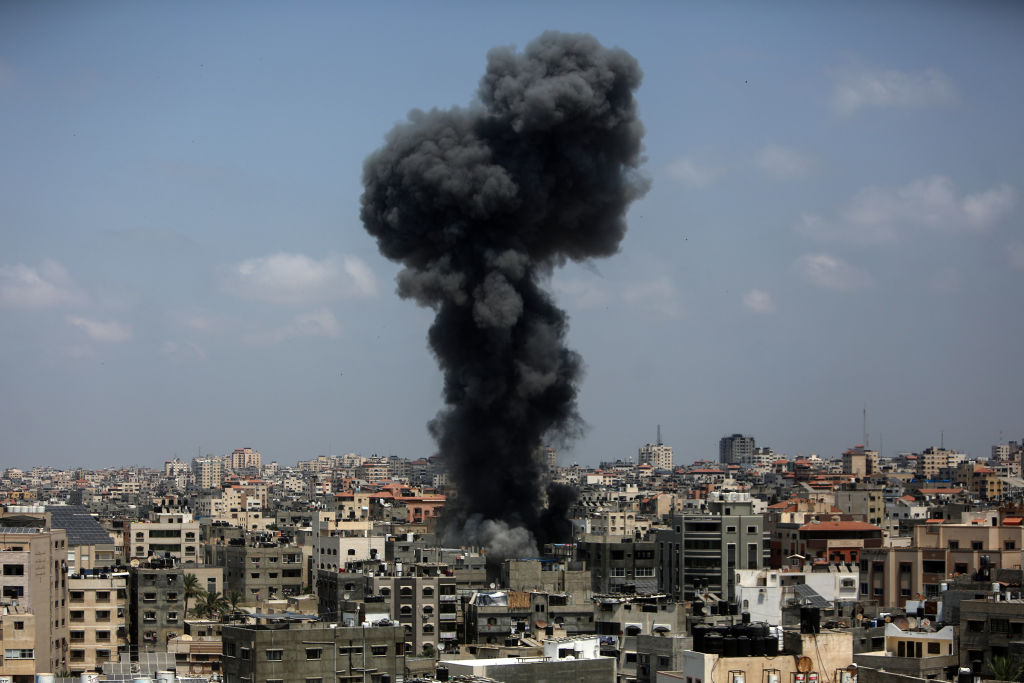
For now, an Aug. 7 Egyptian-brokered truce in Gaza between Israel and the militant group Palestinian Islamic Jihad (PIJ) appears to be largely holding, pausing another round of violence that began days earlier and has killed dozens of Palestinians and sent rockets flying from Gaza to within three miles of Jerusalem. (However, Israeli forces killed at least three Palestinians in a shoot-out on Aug. 9 during a raid against militants in the occupied West Bank.) Unfortunately, this latest deadly showdown between Israel and PIJ is likely a precursor of more conflict to come.
It’s never easy to pinpoint exactly when and why a flare-up in fighting between Israel and Palestinians begins. Before this month’s violence, at least 53 Palestinians were killed between March and July, including Palestinian American Al Jazeera journalist Shireen Abu Akleh. During the same period, a spate of attacks by Palestinians killed at least 19 people in Israel.
Read More: Niece of Slain Al Jazeera Journalist Shireen Abu Akleh on Justice for Her Family
In recent weeks, Israeli officials had begun to fear that PIJ was preparing for more violence in the West Bank. On Aug. 1, Israeli police arrested Bassem al-Saadi, PIJ’s leader in the West Bank, in the city of Jenin, home to two of the attackers who had killed Israelis. The militant group immediately began issuing threats. This was not al-Saadi’s first arrest, but tensions spiked further when a video was released showing the force used to subdue him and an Israeli police dog biting him.
Then, on Aug. 5, Israel launched strikes into Gaza that killed a senior PIJ commander. The militant group responded by firing dozens of rockets into Israeli territory. On Aug. 6, Israel launched more airstrikes into Gaza, and PIJ sharply increased the number of rockets it fired, though there have been no Israeli deaths or injuries reported so far. The violence continued into Aug. 7, with the Palestinian death toll reaching at least 46, including 16 children and four women. Gaza’s Health Ministry says that 360 Palestinians were also wounded. Israeli officials say their strikes killed several senior PIJ members and destroyed both weapon-storage sites and tunnels. The cease-fire followed news that hospitals in Gaza were overwhelmed and could not handle a continuing surge of wounded people.
For its part, Hamas, which has governed Gaza after winning Palestinian legislative elections in 2006, remained largely on the sidelines as Israel made clear its strikes would be targeted at the smaller, more radical PIJ. But given the death toll, it’s far from easy for Hamas to remain above the fray. And PIJ has incentive to create conflicts that increase its popularity with Palestinians in both Gaza and the West Bank.
Read More: On Biden’s Middle East Trip, Human Rights Aren’t a Priority
Adding to the incentive for escalation, Israel is heading for another election in November. Caretaker Prime Minister Yair Lapid has good political reason to take as uncompromising a line as possible. He lacks the military expertise that many Israelis expect of their leaders, and is due to face off against former Prime Minister Benjamin Netanyahu.
Finally, there’s the Iran angle. PIJ has close ties with Iran, and it’s possible that Iran’s government will again encourage the Palestinian militant group to create more trouble for Israel to improve Iran’s bargaining power as diplomats in Vienna continue to try to hash out a return to the 2015 Iran nuclear deal. Before the cease-fire, PIJ’s secretary general issued threats of attack against Israel during a visit to Tehran. On that trip, he met with both Iran’s president, Ebrahim Raisi, and a senior advisor to Supreme Leader Ali Khamenei.
It was just 15 months ago that a burst of Israeli-Palestinian attacks and counterattacks killed hundreds and wounded thousands, most of them Palestinian. Since Israeli forces withdrew from Gaza 17 years ago this month, there have been military clashes in 2008, 2012, 2014 and 2021. All the conditions that spark these wildfires remain in place, not least the crippling 15-year-long Israeli-led blockade. Even if the current cease-fire remains in force, the risk remains that the next war will be even more destructive.
More Must-Reads From TIME
- The 100 Most Influential People of 2024
- Coco Gauff Is Playing for Herself Now
- Scenes From Pro-Palestinian Encampments Across U.S. Universities
- 6 Compliments That Land Every Time
- If You're Dating Right Now , You're Brave: Column
- The AI That Could Heal a Divided Internet
- Fallout Is a Brilliant Model for the Future of Video Game Adaptations
- Want Weekly Recs on What to Watch, Read, and More? Sign Up for Worth Your Time
Contact us at letters@time.com